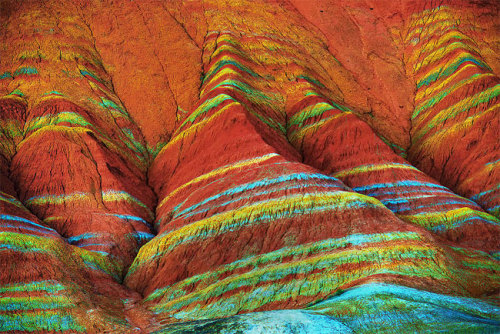Secretagentpeptidebond - Mostly Harmless.

More Posts from Secretagentpeptidebond and Others
Ooh, I love fluorescent compounds! It's a great reward for the long process of synthesis.


How incredible is this compound I made??! It’s an NBD amine, which is fluorescent and used for labeling compounds for fluorescence assays.
Day in the life of a scientist
Me, at an art store: I need a paint marker with low toxicity and a delicate tip.
Employee: What kind of project are you working on?
Me: It's for a research project. I just need bright colors.
Employee: What medium are you using? Canvas or paper?
Me: uh....spiders.
Employee: Plastic or felt?
Me: ....live spiders. Like, from the forest.
Employee: ....
Employee: I have to get back to the counter.

Doing vs. Writing | PHD Comics | http://www.phdcomics.com/comics.php?f=1887

Geminids of the South : Earth’s annual Geminid meteor shower did not disappoint, peaking before dawn on December 14 as our fair planet plowed through dust from active asteroid 3200 Phaethon. Captured in this southern hemisphere nightscape the meteors stream away from the shower’s radiant in Gemini. To create the image, many individual frames recording meteor streaks were taken over period of 5 hours. In the final composite they were selected and registered against the starry sky above the twin 6.5 meter Magellan telescopes of Carnegie Las Campanas Observatory in Chile. Rigel in Orion, and Sirius shine brightly as the Milky Way stretches toward the zenith. Near Castor and Pollux the twin stars of Gemini, the meteor shower’s radiant is low, close to the horizon. The radiant effect is due to perspective as the parallel meteor tracks appear to converge in the distance. Gemini’s meteors enter Earth’s atmosphere traveling at about 22 kilometers per second. via NASA
js
On the care and keeping of your scientist
Congratulations on adopting a scientist! Regardless of their field they will require much coffee, free food, and love. Here are some field specific tips for keeping your scientist happy and healthy!
Biology: make sure they don't get overly invested in their model organism by reminding them about the flaws inherent in their system on a regular basis, but also make sure to join in when they criticize other models in favor of their own
Chemistry: don't let them do that 'just one more reaction' at 10 pm. make sure they get out of the lab and see the sun on a regular basis. try to keep them from partying too hard when they do leave the lab
Geology: humor their rock puns but don't let the lick the rocks (they will tell you they need to lick the rocks to identify them, but don't fall for it)
Astronomy: try not to let them become completely nocturnal. point out nice stars to them and look suitably impressed by their "pictures" of planets that don't look like anything to you
Physics: take them to the park on a regular basis to remind them that things larger than subatomic particles exist. bring a frisbee or a ball to play catch with and be impressed by their ability to calculate trajectories
Math: always make sure to have free batteries for their calculators and a mathmatica user guide on hand. Humor them when they tell you why space without angles is important
Ecology: make sure they remember to wear sunscreen and keep an eye on them in the field. Remind them to come inside and analyze their data occasionally
Psychology: don't mention Freud or ever call them a soft or social science, but make sure you gently remind them that social factors can impact reproducibility and try to keep them from drawing sweeping conclusions about the inherent nature of humanity
Neuroscience: be suitably impressed by their newest experiment and then remind them that people are not mice as often as possible
Computer Science: make sure they take breaks while debugging by limiting their supply of coffee. Nod and smile when they go off on indexing and arrays. Make sure they always have a rubber duck.
Make sure to keep your scientist away from engineers unless they have been properly socialized to interact in a translational household. The most important thing is to remember to hug your scientist on a regular basis and remind them that there is life outside the lab
-
 starlystudios liked this · 2 years ago
starlystudios liked this · 2 years ago -
 zamii070receipts liked this · 2 years ago
zamii070receipts liked this · 2 years ago -
 tobeavirginian liked this · 2 years ago
tobeavirginian liked this · 2 years ago -
 terriblygrimm liked this · 2 years ago
terriblygrimm liked this · 2 years ago -
 somethinggotoutofthepaintings reblogged this · 2 years ago
somethinggotoutofthepaintings reblogged this · 2 years ago -
 sillyawkwardturtle liked this · 2 years ago
sillyawkwardturtle liked this · 2 years ago -
 mydickisfuckingrichard liked this · 3 years ago
mydickisfuckingrichard liked this · 3 years ago -
 starkidgleekr5er reblogged this · 3 years ago
starkidgleekr5er reblogged this · 3 years ago -
 knife0clock liked this · 3 years ago
knife0clock liked this · 3 years ago -
 kdot347 liked this · 4 years ago
kdot347 liked this · 4 years ago -
 lcook77 liked this · 4 years ago
lcook77 liked this · 4 years ago -
 sunshine-gumdrop reblogged this · 4 years ago
sunshine-gumdrop reblogged this · 4 years ago -
 sunshine-gumdrop liked this · 4 years ago
sunshine-gumdrop liked this · 4 years ago -
 is-this-a-key reblogged this · 4 years ago
is-this-a-key reblogged this · 4 years ago -
 is-this-a-key liked this · 4 years ago
is-this-a-key liked this · 4 years ago -
 mockingbirdie liked this · 5 years ago
mockingbirdie liked this · 5 years ago -
 cellia1 liked this · 5 years ago
cellia1 liked this · 5 years ago -
 tensiontamer reblogged this · 5 years ago
tensiontamer reblogged this · 5 years ago -
 medspectre liked this · 5 years ago
medspectre liked this · 5 years ago -
 amoursdivines reblogged this · 5 years ago
amoursdivines reblogged this · 5 years ago -
 hypergraphism reblogged this · 5 years ago
hypergraphism reblogged this · 5 years ago -
 karmadilloo reblogged this · 5 years ago
karmadilloo reblogged this · 5 years ago -
 problemeule liked this · 5 years ago
problemeule liked this · 5 years ago -
 coffiocake reblogged this · 5 years ago
coffiocake reblogged this · 5 years ago -
 vault76 reblogged this · 5 years ago
vault76 reblogged this · 5 years ago -
 vault76 liked this · 5 years ago
vault76 liked this · 5 years ago -
 j-dw liked this · 5 years ago
j-dw liked this · 5 years ago -
 clownsnatch liked this · 5 years ago
clownsnatch liked this · 5 years ago -
 henniehen14 reblogged this · 5 years ago
henniehen14 reblogged this · 5 years ago -
 shyartnerd564 liked this · 5 years ago
shyartnerd564 liked this · 5 years ago













